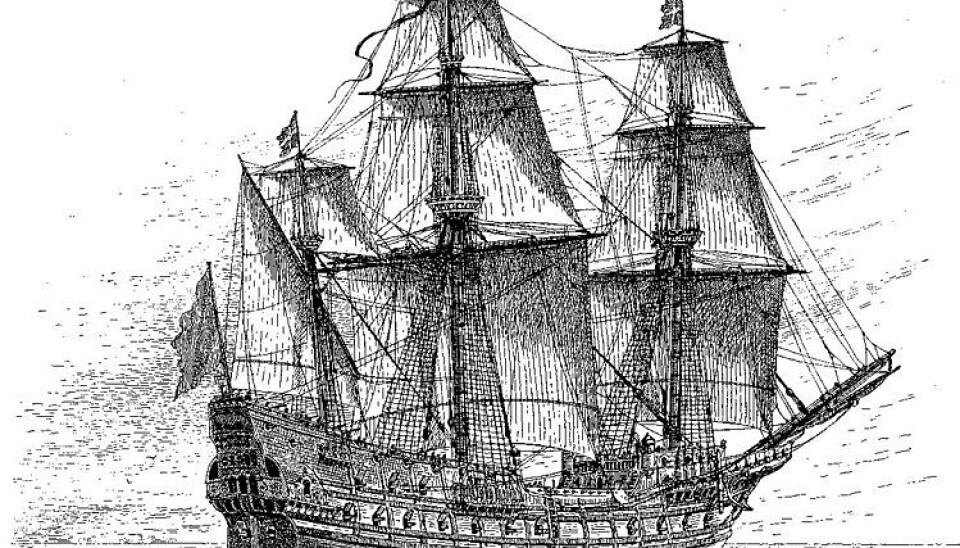An article from forskning.se

Researchers get to the bottom with the ship
After 20 years of searching, divers are happy they’ve found what is thought to be the warship Mars, which went down in 1564, just off the island of Öland in the Baltic. Now it’s up to Sweden’s researchers to make the most of the history preserved at the bottom of the sea.
Andréas Olsson is a marine archaeologist and division director at the Maritime Museum in Stockholm. Recently his name appeared in several newspapers after the news of the Mars shipwreck was released. He and other researchers now face the long task of determining the identity of the ship. Just how this research will be pursued has not yet been decided, but it will probably be in form of collaboration between the Maritime Archaeological Research Institute MARIS at Södertörn University, Sweden’s maritime museums,and the University of Southhampton, England.
How do you determine the identity of such an old ship?
"We know there was a sea battle between the Swedish and the Danish-Lübeckian navies in 1564 off the northern tip of Öland. We also have certain simple descriptions of the vessels that were lost there. Then we’ll base our work on the photos and films of the site and will try to tie in the wreck with the written sources. We’re fairly sure that what we’ve found is theMars. The size of the wreck fits, construction details and the mixture of different sized bronze cannons and a few forged iron cannons meet our expectations for what would be found on theMars," says Olsson.
What is documented about theMars?
"There are quite a few written sources. On the one hand, we have documents depicting the battle and, on the other hand, there are those that describe the construction of the ship."
Do you have the plans for the ship?
"No, plans were rare in the 16th century. They weren’t common until the 18th century. What’s more, a ship seldom resembled a plan, because it was changed during construction. On the other hand, we do have depictions, such as paintings, of various ships."
How are the researchers going to proceed from here?
"This will involve multiple phases. In the first phase we will document the wreck in images and complement this with measurements of various construction details. Phase two will be to work with the material gathered to develop sketches for a drawing. This is work that will take considerable time. We will probably also be using what we call dendrochronology, that is, dating the timber the ship was made of."
No Mars Museum
Are you going to salvage the ship and create a Mars Museum of it?
"This is not something we are working for. Personally, I think we already have an excellent Vasa Museum, as well as a fine museum for the man-of-war The Crown. Do we really need another one? We need to bear in mind that it’s an incredibly massive socioeconomic undertaking and requires many years of conservation efforts to salvage a ship. Conservation of the Vasa is still underway, and divers are still exploring the wreckage of The Crown. In other words, it’s a long and comprehensive task", says Olsson.
Are there any risks involved in bringing up objects that have been untouched for so long, such as bacteria and diseases?
"In connection with municipal archaeological excavations of latrines, for example, the archaeologists have had to be provided with facemasks and gloves, so the question is justified. But I haven’t ever heard of this in connection with a marine archaeological excavation", says Olsson.
Divers have been looking for theMarsfor 20 years. Are there any other ships you’re actively searching for?
"Yes, there are a few somewhat mystical vessels we’re looking for. Often they’re wrecks that Anders Franzen (who found the Vasa, among other things) wrote about. One example is the ship The Sword, which ran aground close to where The Crown went down. The problem is that she caught fire and drifted off before sinking, so it’s hard to find the spot where she went down. The instruments we use today are extremely good, and the equipment is moreover available to considerably more divers now than in the past. Lots and lots of shipwrecks are being found in the Baltic these days, and there will be spectacular new finds coming up", says Olsson.
--------------------------




